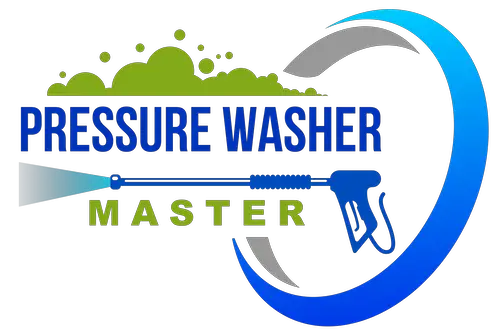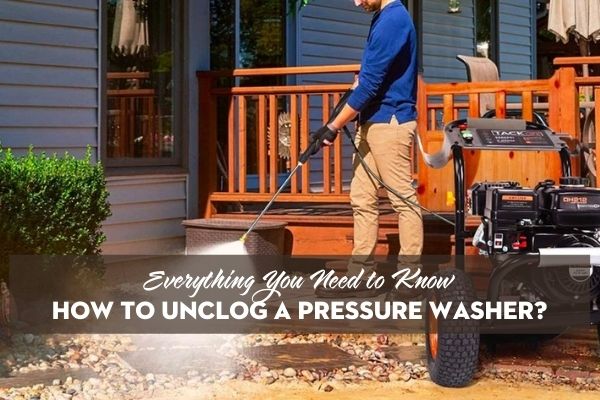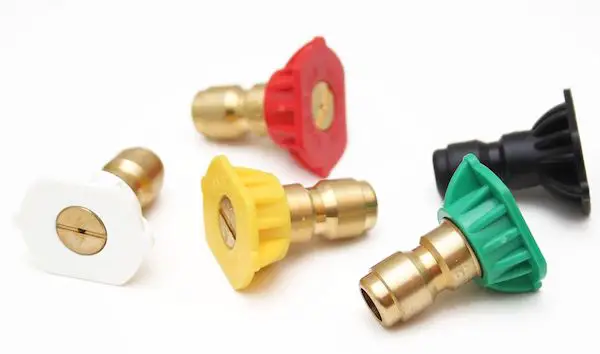Pressure washer nozzles come in a variety of styles, as we all know. For example, nozzles with smaller holes provide more pressure, whereas those with larger holes produce less. These various nozzles, with their various pressures, can be beneficial for a variety of applications.
You might want to use a higher-pressure nozzle for concrete, while you might need the lower-pressure one for decking. Likewise, one that might be used for metal chairs would not be suitable for your vinyl siding.
It will become a headache if a nozzle clogs. So, this post is to tell you how to unclog a pressure washer and prevent them from clogging again.
How Do Pressure Washer Nozzles Work?
Imagine yourself in your front yard, holding the garden hose with water gushing from the nozzle in your right hand. Perhaps you’re watering the garden and need to get 15 feet away from the plants.
The issue is that the hose’s stream is feeble and only reaches 5 feet. So, how do you go about it? You close off 3/4 of the hole with your thumb. All of the water must now escape through the narrower hole.
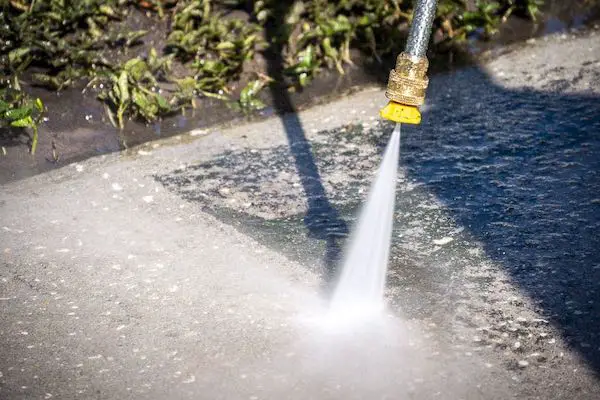
What is the function of water? It does seem to be speeding up. We also know that higher velocity equals more distance according to Mr. Isaac Newton’s principles of motion. The water is now 15 feet away from those plants.
This is how a nozzle works in general. Increase the velocity while restricting the flow. And it is this increase that allows the pressure washer water spray to have more cleaning power and force.
Different nozzles are required for different operations, much as different grits of sandpaper are required for sanding down the wood.
What Are The Factors Causing A Clogged Pressure Washer?
- Debris is the most apparent reason for a clogged pressure washer. Even though the nozzle is small and a water filter keeps dirt out, microscopic particles stick to the surface and harden with time. This degrades the performance of your system.
- Caking occurs when worn materials, both within and outside the machine, break down into small fragments and clog the nozzle.
- Destroyed rubber seals clog the hose.
- Corrosion and erosion in different components of the machine can be caused by using high-powered detergents. This mess may clog the nozzle as a result.
What Will Happen To A Clogged Pressure Washer?
Consider covering your nose with a piece of cloth and then trying to breathe out to learn how blocked nozzles influence pressure washer performance. Next, consider blowing air through a straw with the other end of the straw covered with a damp towel. Again, it’s the way pressure washer clogged hinder their ability to function at their best.
If the blockage is the cause of low pressure, you’ll notice that the motor is working overtime. Pumping water with additional strength and force would also be required. In a word, blocked nozzles will lower the water pressure they shoot and impact its overall efficiency.
The necessity of cleaning clogged nozzles in a power washer is to ensure that they function at their best, particularly in flow rate, impact pressure, and efficiency. In addition, your power washer becomes the most convenient cleaning tool when the motor isn’t struggling and the pump is running smoothly.
Clogging is one of the most prevalent pressure washer difficulties, according to professionals in the field. Worse, it might grind to a standstill anything you want to accomplish with your washer.
Most importantly, understanding how to troubleshoot these devices will allow you to address mechanical issues before they become significant problems.
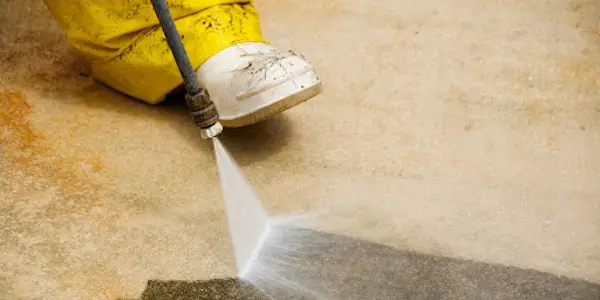
How To Unclog A Pressure Washer
Use A Pin
Step 1: Take out the Nozzle
It’s crucial to remove the nozzle since using the pin to poke the holes while it’s linked to the hose might cause it to clog at the primary connection point.
Step 2: Puncture the Holes
Poke the holes one by one while holding the nozzle sideways. Wipe any residue off the pin when it comes out the other end using a towel.
Step 3: Clean the Nozzle
Turn on the water while holding the nozzle below a tap. Allow the sediments to wash away. To make sure there are no more blockages, insert the pin a couple more times.
Step 4: Reassemble the Nozzle.
Turn on the machine after the nozzle is connected to the hose. Adjust the water pressure and check that the water is flowing correctly.
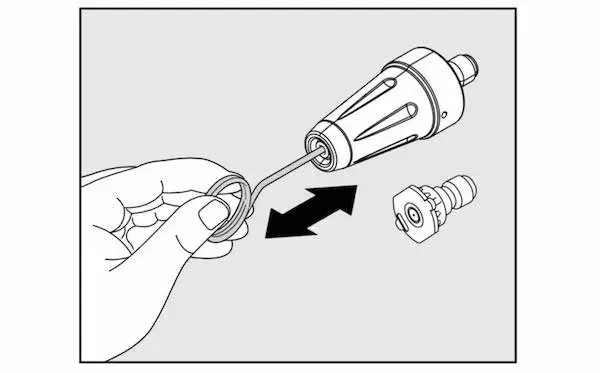
Vinegar
Vinegar is a versatile home ingredient that can be used to clean almost everything. It may also be used on and in a pressure washer. It’s a more environmentally friendly option, plus a few drops of essential oil may make the space smell fantastic.
Scraping calcium deposits and grime that have hardened within or outside a nozzle does not function effectively. This is when vinegar enters the picture. Fill a basin halfway with white vinegar and submerge the nozzle for a few minutes. Vinegar’s acidity reacts with calcium, grime, and oil, dissolving everything it comes into touch with.
Vinegar is entirely safe to consume. When using it with your pressure washer, though, stick to white vinegar. Plus, while putting it in the machine, don’t combine it with detergents or other chemicals.
Check out this video if you want another way on how to unclog a pressure washer:
How To Maintain A Pressure Washer’s Nozzles
Before each usage, clear the nozzle with a pin.
It’s simple to change the nozzles on the spray cannon wand:
- If the previous nozzle is still in place, lift the retainer upward to release it.
- To secure the new nozzle, raise the retainer, insert the new nozzle, and then release the retainer.
- Check if the new nozzle is working correctly once it has been fitted.
Conclusion
Finally, understanding how to unclog a pressure washer nozzle is essential. You do not need to spend money on a repair and maintenance specialist to do a task that may be completed in a few simple steps. We hope that by following the advice in this article, your experience with these devices will increase to the most significant degree of efficiency.
Further Reading
